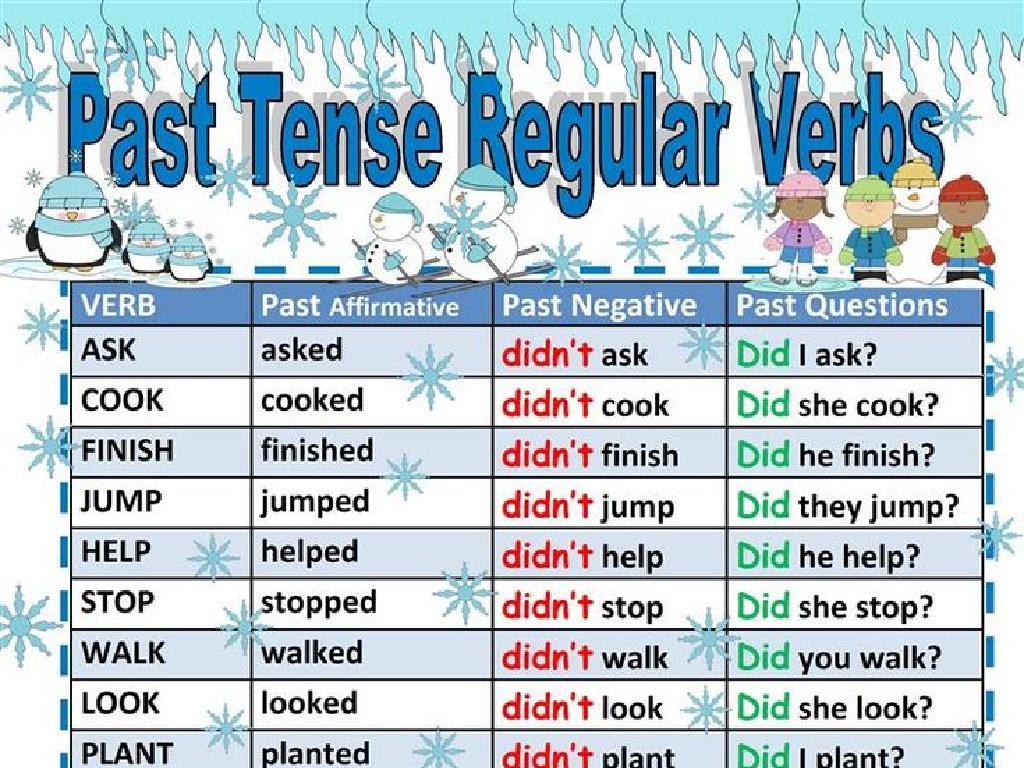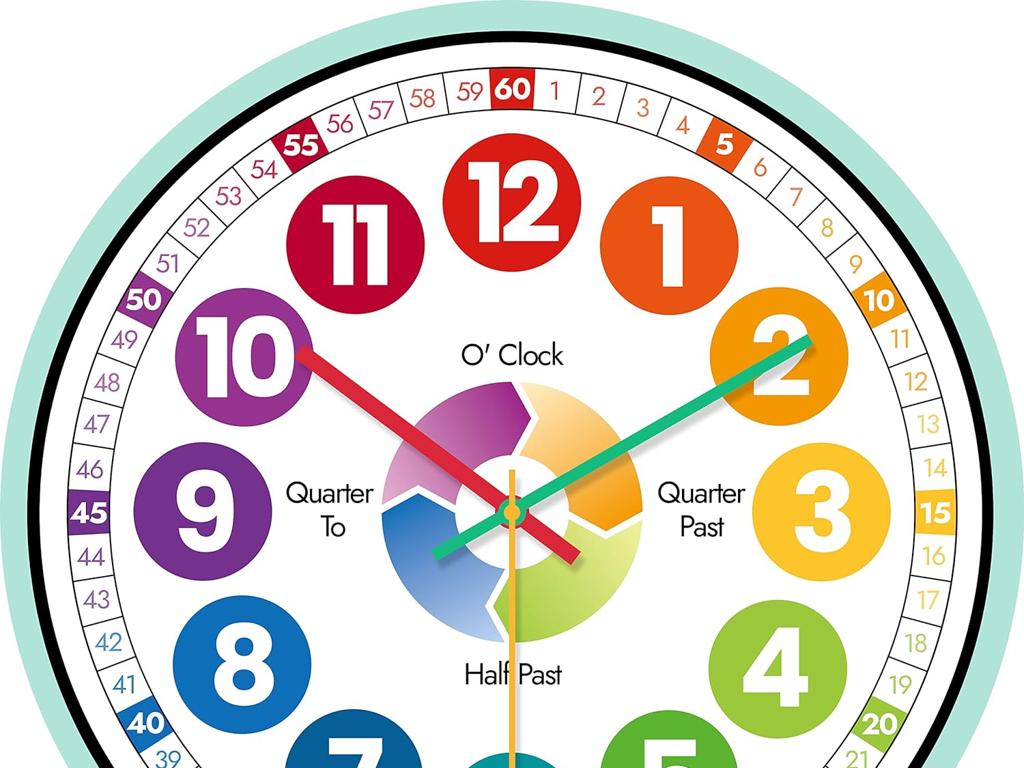Create Histograms
Subject: Math
Grade: Seventh grade
Topic: Data And Graphs
Please LOG IN to download the presentation. Access is available to registered users only.
View More Content
Introduction to Histograms
– Define a Histogram
– A histogram is a chart showing frequency of data within certain intervals.
– Explore Data Distribution
– Data distribution shows how often values occur within a range.
– Histograms vs Bar Graphs
– Histograms have connected bars; bar graphs have separate bars for each category.
– Interpreting Histograms
– Analyze the shape, center, and spread of data in a histogram.
|
Begin the lesson by defining a histogram as a type of graph that represents the frequency of data within certain intervals, which helps in understanding the distribution of data. Explain that data distribution is a critical concept in statistics that shows how often values occur within a range. Clarify the difference between histograms and bar graphs, emphasizing that histograms are used for continuous data while bar graphs are for categorical data. Teach students how to interpret histograms by analyzing their shape, center, and spread, which will give insights into the data set’s overall pattern. Provide examples of histograms using data relevant to seventh graders, such as test scores or daily temperatures, to illustrate these concepts.
Why Use Histograms?
– Visualize large data sets
– Histograms turn numbers into pictures for quick insight.
– Compare data intervals
– See how data groups into ranges, making comparisons easier.
– Identify data patterns
– Spot trends, clusters, and gaps in data at a glance.
– Enhance data interpretation
– Histograms help make informed decisions based on data.
|
Histograms are essential tools in mathematics for students to understand data representation. They provide a visual summary of large data sets, making it easier to digest complex information. By grouping data into intervals, histograms allow for comparison between different ranges of data. This can be particularly useful in identifying patterns such as trends, clusters, and gaps, which might not be immediately obvious when looking at raw data. Encourage students to think about how histograms can be used in real-life situations, such as in weather patterns or class test scores. This slide aims to explain the importance of histograms in analyzing and interpreting data effectively.
Parts of a Histogram
– Title: Guides the viewer
– The title explains what the data is about, like ‘Hours Spent on Homework’.
– X-Axis: Data intervals (bins)
– Bins group the data, such as ‘0-1 hours’, ‘1-2 hours’, etc.
– Y-Axis: Frequency of data
– Frequency shows how many times data appears within each bin.
– Bars: Visualize data frequency
– Each bar’s height represents the frequency for that interval.
|
This slide introduces the basic components of a histogram, which is a type of bar graph used to represent the distribution of data. The title of the histogram provides context for what the data represents. The X-axis is divided into intervals, or ‘bins’, which categorize the data into ranges. The Y-axis indicates the frequency, or how often data points fall within each bin. The bars give a visual representation of the data frequency, with the height corresponding to the number of data points in each bin. When creating a histogram, it’s important to choose appropriate bin sizes to accurately reflect the distribution of the data. Encourage students to think about why histograms are useful for displaying certain types of data and how they might interpret the information presented in a histogram.
Creating a Histogram
– Collect and sort data
– Choose scale and intervals
– Scale must fit data range; intervals should be equal
– Draw and label axes
– X-axis: intervals, Y-axis: frequency of data
– Fill in bars for intervals
– Height represents frequency within each interval
|
In this lesson, students will learn the step-by-step process of creating a histogram, which is a graphical representation of data using bars of different heights. Histograms are useful for showing the distribution of a dataset. Begin by collecting and organizing the data into a list or table. Next, determine a suitable scale and interval size for the histogram, ensuring that the intervals are equal and cover the entire range of data. Then, draw the horizontal and vertical axes, labeling the intervals on the horizontal axis and the frequency on the vertical axis. Finally, fill in the bars corresponding to the frequency of data within each interval. The height of each bar will represent the number of data points that fall within that interval. Encourage students to practice by creating their own histograms with sample data provided or data they’ve collected themselves.
Creating a Histogram: Class Test Scores
– Collect recent test scores
– Set score intervals
– e.g., 60-69, 70-79, up to 100
– Tally scores in each interval
– How many scores are in each range?
– Construct and label the histogram
– Use bars to represent score frequencies
|
This slide is aimed at teaching students how to create a histogram using their own class test scores. Start by gathering all the test scores and then decide on the intervals, which are ranges of scores that will be grouped together. Once the intervals are set, count the number of scores that fall into each interval. This will be the frequency. After tallying the scores, students will draw a histogram, which is a type of bar graph, to visually represent the frequency of scores within each interval. Make sure each bar’s height corresponds to the number of scores in that interval, and label the axes appropriately. The histogram will help students visualize the distribution of the class’s performance.
Interpreting Histograms
– Identify the mode of the data
– Mode: The range with the highest bar
– Discuss the data’s spread
– Spread: The range from lowest to highest value
– Look for gaps or outliers
– Gaps/Outliers: Unusual spaces or spikes in data
– Infer from the histogram
– What does the data tell us about the topic?
|
When interpreting histograms, start by identifying the mode, which is the most frequent score range indicated by the tallest bar. Discussing the spread involves examining the range of the data from the lowest to the highest value, which gives insights into the variability. Students should also look for gaps, which are empty spaces between bars, or outliers, which are bars that stand apart from the rest of the data, as these can indicate special circumstances or errors in data collection. Finally, encourage students to think critically about what the overall shape and distribution of the histogram can tell us about the underlying dataset and the context from which it was drawn.
Class Activity: Create Your Histogram
– Receive a set of data
– Create a histogram on graph paper
– Organize data into intervals; draw bars to represent frequency
– Label your histogram with titles
– Include title, axis labels, and scale
– Share and discuss in class
|
In this activity, students will apply their knowledge of histograms by creating one from a provided data set. Distribute different data sets to each student to ensure a variety of histograms for discussion. Provide graph paper and remind students to pay attention to the scale and interval size. Emphasize the importance of labeling, including the title, axes, and scale. Once completed, organize a session where students present their histograms to the class, explaining their data organization and any patterns they observe. This will foster a deeper understanding of data representation and interpretation. Possible data sets could include test scores, daily temperatures, or class survey results.
Histograms: Conclusion and Recap
– Review histogram definition
– A histogram displays frequency of data within specified ranges
– Choosing the right intervals
– Intervals must be equal and relevant to the data set
– Interpreting histograms
– Analyze the shape, center, and spread of data
– Open Q&A session
|
As we conclude, revisit the definition of histograms and their purpose in representing data visually. Emphasize the importance of selecting appropriate intervals, as this can greatly affect the histogram’s readability and the conclusions drawn from it. Review the steps to interpret histograms, including analyzing their shape, center, and spread to understand the distribution of the data set. Finally, encourage students to ask any questions they have, ensuring they leave the class with a solid understanding of histograms and how to create and interpret them.






